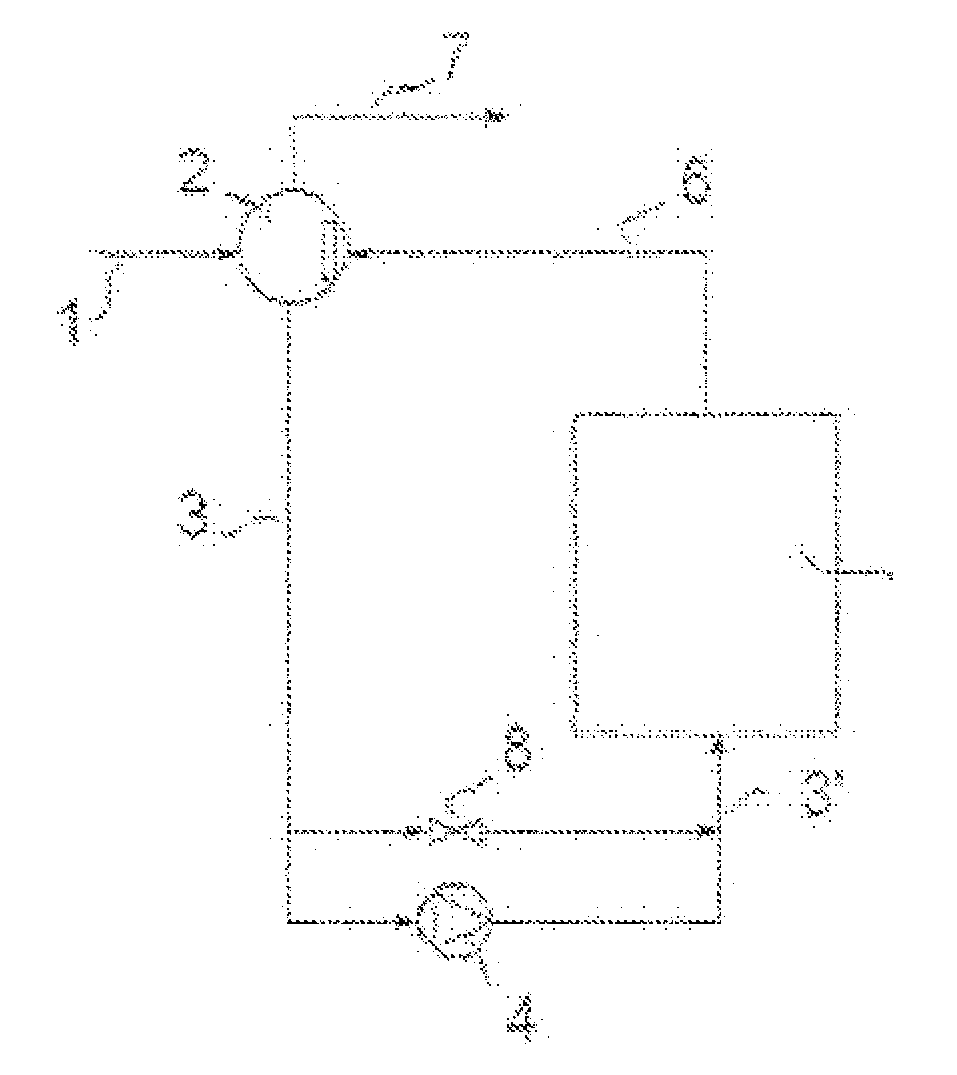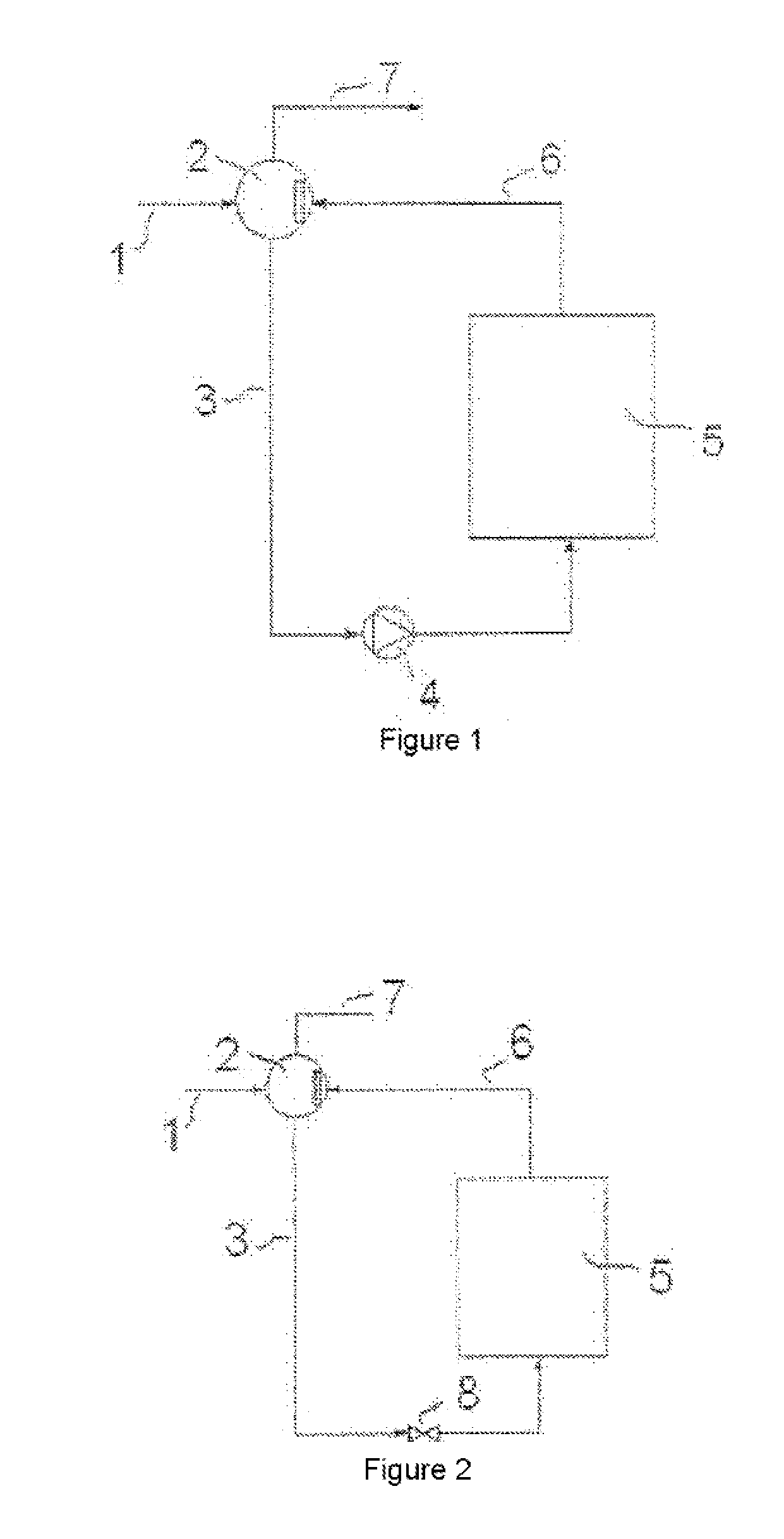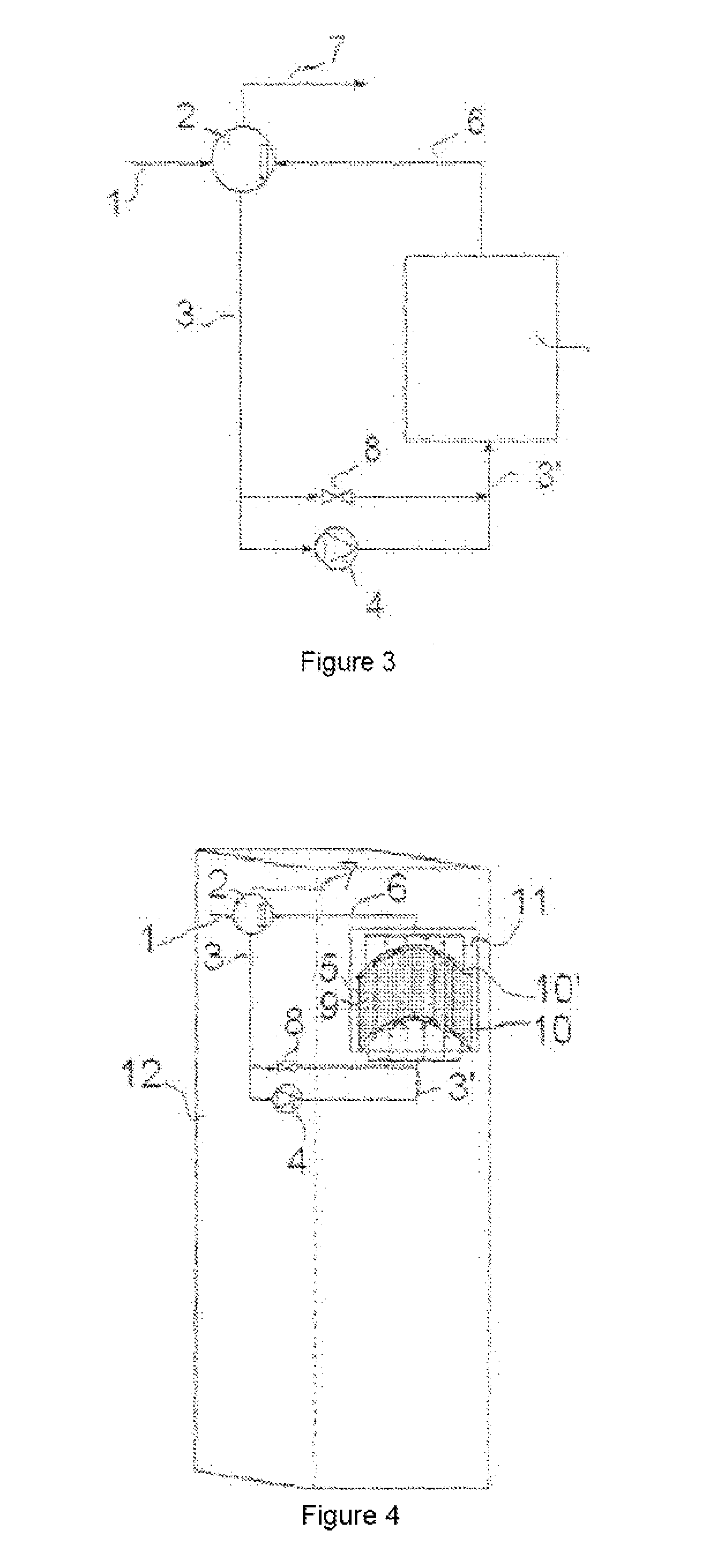Solar receiver with natural circulation for generating saturated steam
a solar receiver and natural circulation technology, applied in mechanical equipment, machines/engines, lighting and heating apparatus, etc., can solve the problems of not facilitating natural circulation and much smaller dimensions handled
- Summary
- Abstract
- Description
- Claims
- Application Information
AI Technical Summary
Benefits of technology
Problems solved by technology
Method used
Image
Examples
Embodiment Construction
[0014]The design of a circuit that uses natural circulation for the supply of the working fluid to the receiver, allows more efficient use of solar energy since it minimizes the pressure drops in the solar component, favoring the ascent without drive of the fluid through the receiver tubes and removing the need for forced recirculation of the same. The foregoing is presented as the main technological advantage of the proposed system compared to currently available devices.
[0015]The natural circulation is based on the physical fact that, by decreasing the density of a fluid, it tends to rise. So, if you have a hot focus, in a lower zone (receiver) and a cold focus in a higher zone (boiler), natural circulation is achieved between the two foci, being able to eliminate the recirculation pumps. These pumps can be eliminated as long as the recirculation flow rate is sufficient to cool the receiver. The higher the cold focus is with respect to the hot, the recirculation flow rate obtained...
PUM
 Login to View More
Login to View More Abstract
Description
Claims
Application Information
 Login to View More
Login to View More - R&D
- Intellectual Property
- Life Sciences
- Materials
- Tech Scout
- Unparalleled Data Quality
- Higher Quality Content
- 60% Fewer Hallucinations
Browse by: Latest US Patents, China's latest patents, Technical Efficacy Thesaurus, Application Domain, Technology Topic, Popular Technical Reports.
© 2025 PatSnap. All rights reserved.Legal|Privacy policy|Modern Slavery Act Transparency Statement|Sitemap|About US| Contact US: help@patsnap.com



